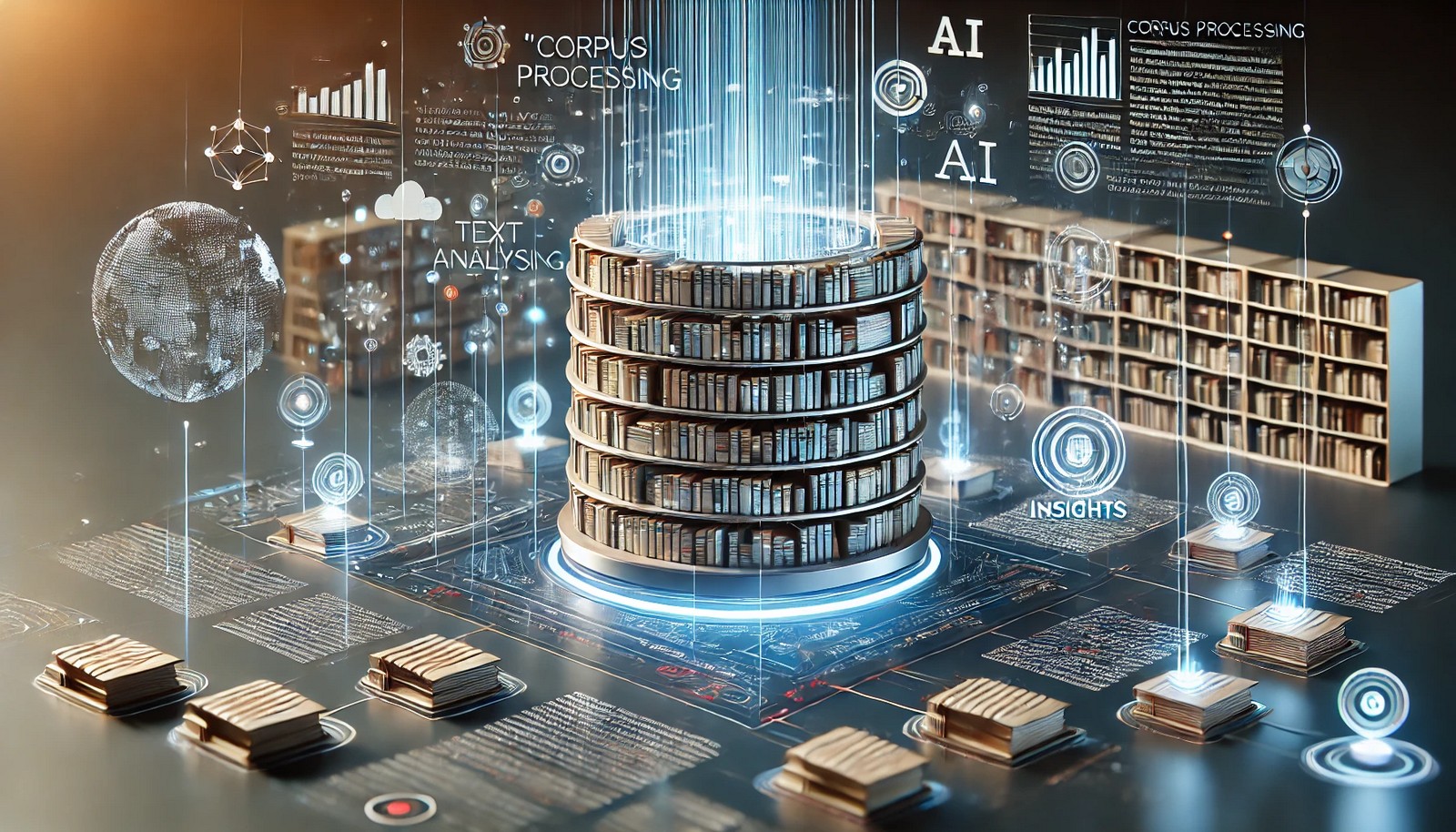Corpus Processing

Quick Navigation:
- Corpus Processing Definition
- Corpus Processing Explained Easy
- Corpus Processing Origin
- Corpus Processing Etymology
- Corpus Processing Usage Trends
- Corpus Processing Usage
- Corpus Processing Examples in Context
- Corpus Processing FAQ
- Corpus Processing Related Words
Corpus Processing Definition
Corpus processing refers to the systematic analysis and manipulation of large bodies of text, known as corpora, to extract meaningful patterns, insights, or structured data. It involves various tasks such as tokenization, tagging, parsing, and semantic analysis, frequently applied in natural language processing (NLP). By utilizing corpus processing, AI models can better understand, interpret, and generate human language, aiding in tasks like machine translation, sentiment analysis, and automated summarization.
Corpus Processing Explained Easy
Imagine you have a big pile of books, and you want to know what words are used the most or how sentences are structured. Corpus processing is like having a tool that goes through all those books for you, picking out patterns and interesting details. This helps computers understand what people are saying and can even help answer questions or translate between languages!
Corpus Processing Origin
The origins of corpus processing are deeply tied to computational linguistics and early attempts to automate language understanding. As computers became more powerful, researchers in the 1950s and 1960s began using corpora, or large text collections, to teach computers basic language comprehension.
Corpus Processing Etymology
The term "corpus" is derived from Latin, meaning "body," reflecting a collection of written or spoken material. "Processing" refers to the structured analysis and transformation of this textual body.
Corpus Processing Usage Trends
Corpus processing has gained significant momentum with the rise of big data and machine learning. Fields such as social media analysis, customer sentiment tracking, and conversational AI rely on corpus processing to analyze vast amounts of unstructured text. With advancements in computational power, corpus processing has expanded from academia into commercial applications, especially in customer service, content moderation, and digital marketing.
Corpus Processing Usage
- Formal/Technical Tagging:
- Natural Language Processing
- Data Science
- Computational Linguistics - Typical Collocations:
- "corpus processing algorithm"
- "text corpus analysis"
- "corpus-based NLP"
- "semantic processing of corpora"
Corpus Processing Examples in Context
- A corpus processing system can analyze thousands of product reviews to identify common customer sentiments.
- Researchers use corpus processing to examine linguistic changes over time by analyzing historical texts.
- AI-powered chatbots leverage corpus processing to understand and respond accurately to user queries.
Corpus Processing FAQ
- What is corpus processing?
Corpus processing involves analyzing large text datasets to understand and interpret language patterns. - How is corpus processing used in AI?
It supports natural language understanding and generation tasks in NLP, such as translation, summarization, and sentiment analysis. - Why is corpus processing important in NLP?
It allows machines to process vast amounts of text, extracting valuable insights and enabling better language comprehension. - How does corpus processing relate to machine learning?
Corpus data is used to train machine learning models, enhancing their language processing abilities. - What tools are used in corpus processing?
Common tools include NLTK, spaCy, and Gensim, each offering functionalities for parsing, tagging, and tokenization. - Is corpus processing only used in English?
No, corpus processing can be applied to any language, provided there are sufficient data and linguistic tools available. - What is tokenization in corpus processing?
Tokenization is the process of breaking down text into smaller units like words or sentences, making it easier for analysis. - Can corpus processing detect sentiment?
Yes, it’s widely used to analyze sentiment, especially in customer reviews and social media content. - How does corpus processing help in translation?
It aids in understanding language structure, which is crucial for accurate machine translation. - What are the challenges in corpus processing?
Challenges include handling large data volumes, language ambiguity, and ensuring accuracy across diverse text types.
Corpus Processing Related Words
- Categories/Topics:
- Natural Language Processing
- Machine Learning
- Text Mining
Did you know?
Corpus processing helped create the first computer-based dictionaries by analyzing text corpora. Early projects used extensive text collections to identify and define new words, helping researchers develop the foundations for modern computational linguistics.
PicDictionary.com is an online dictionary in pictures. If you have questions or suggestions, please reach out to us on WhatsApp or Twitter.Authors | Arjun Vishnu | @ArjunAndVishnu

I am Vishnu. I like AI, Linux, Single Board Computers, and Cloud Computing. I create the web & video content, and I also write for popular websites.
My younger brother, Arjun handles image & video editing. Together, we run a YouTube Channel that's focused on reviewing gadgets and explaining technology.



Comments powered by CComment